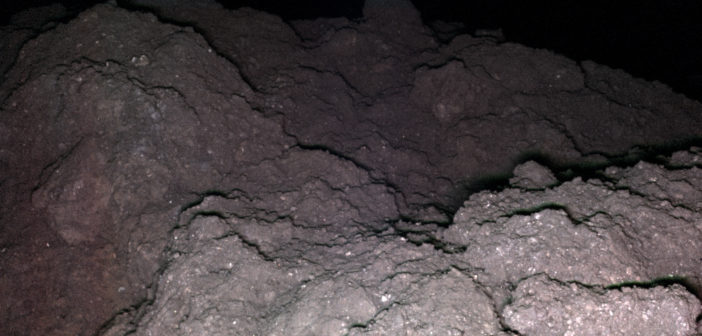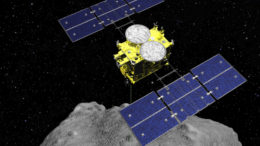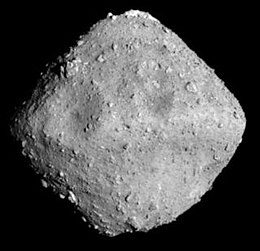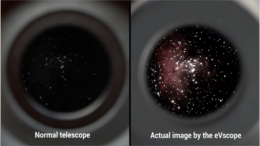Editor’s note: We’re wrapping up a busy summer with one last conference: the EPSC-DPS joint meeting in Geneva, Switzerland. To celebrate the announcement of AAS Publishing’s new Planetary Science Journal, we’ll be bringing you some highlights from this planetary science conference all week!
Press Conference: Asteroid Sample Return Mission: Hayabusa2
It’s pretty exciting that, in recent years, we’ve been able to send spacecraft to directly explore a number of the small bodies in our solar system, learning more about these objects’ composition, formation, evolution — and even their role in the formation of life on Earth. Two of these recent missions, Hayabusa2 and OSIRIS-REx, are visiting nearby asteroids — and they have the added goal of returning samples of these asteroids to Earth. In today’s press conference, we got to hear more about one of these endeavors.
The Hayabusa2 mission follows on the heels of Hayabusa, a spacecraft developed by the Japan Aerospace Exploration Agency (JAXA) that, in 2003, traveled to small near-Earth asteroid 25143 Itokawa and returned a sample to Earth in 2010. Hayabusa2 hopes to build on that success, providing additional clues to the origin and evolution of the inner, terrestrial planets in our solar system, as well as to the origin of water and organic compounds — precursors to life — on Earth.Like all missions that include actual contact with a solar-system body, Hayabusa2’s operations are incredibly complex. After launching in 2014 and arriving at its target — the asteroid 162173 Ryugu — in 2018, Hayabusa2 began a multi-step process to gather information about this primitive near-Earth asteroid. Several rovers were deployed to the asteroid, an impactor was fired at Ryugu’s surface, and the spacecraft completed two touchdowns, briefly tapping the asteroid’s surface before lifting off again.
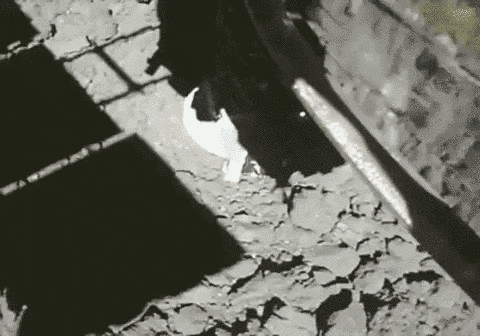
Short clip of Hayabusa2 touching down on the surface of asteroid Ryugu. The clip plays at roughly ten times the actual speed. [JAXA]
In April 2019, Hayabusa2 deployed what is basically a space gun: a system that could fire a single 2.5-kg copper projectile into Ryugu’s surface at a speed of ~2 km/s (about 4,500 mph). After deploying a camera to watch, Hayabusa2 hid out of reach of debris and waited for the results. We expected the formation of a crater of perhaps 2 or 3 meters — but the actual crater that formed is larger than 10 meters! This suggests that Ryugu’s material is of lower density and higher porosity than we thought.
The next step was to sample Ryugu’s subsurface material, kicked up by the impact and deposited around the crater region. Hayabusa2’s second touchdown occurred roughly 20 meters from the crater site, giving the spacecraft an opportunity to gather a quick sample of the ejected material before returning to orbit. We don’t yet know how much material was gathered — and, in fact, we won’t know until we open the sample container once it’s returned to Earth at the end of next year! — but we don’t need much: all the sample analysis can be completed if we’ve gathered as little as 0.1 grams.Even before we consider the upcoming sample return, we’ve already learned a lot about Ryugu from Hayabusa2’s imaging observations! Antonella Barucci (Observatoire de Paris) detailed how advanced statistics have allowed us to explore the reflected light from Ryugu, mapping out the asteroid’s surface and gathering detailed information from its spectrum. The spectral variation on Ryugu’s surface reveals information about space weathering and the grains of its surface material (its regolith). It also provides constraints on how this rubble-pile asteroid formed, reaccumulating from the wreckage of its parent asteroid.
Changing gears, Franck Marchis (SETI Institute) discussed recent work that will advance another asteroid mission: Lucy. NASA’s Lucy space probe will launch in 2021 and journey to Jupiter’s trojan asteroids, likely flying by six of them on its tour. Before the spacecraft undertakes this voyage, however, it would be helpful for us to learn everything we can about its targets. This, according to Marchis, is where eVscope can be useful.
Unistellar’s enhanced vision telescope (eVscope) is a backyard telescope that began as a kickstarter project and has now gone into production. This unique telescope is designed to reduce the entry barrier to amateur astronomical observation, making it easy for anyone to observe the night sky. The telescope is highly portable, easily and quickly set up and initiated, and accumulates light over short periods rather than passing it directly through to an eyepiece, providing an immediate deeper view.Perhaps most intriguing of eVscope’s features is the fact that it comes with an app that allows the user to connect to world-wide observing campaigns. The app is able to send out alerts about upcoming transient events (perhaps an asteroid flyby, a supernova, or a comet) and, if the user accepts the observation request, it can transmit instructions to automatically point the user’s eVscope to observe the event. The observations from all users are then combined and shared, allowing scientists to build a much more complete picture of the event than could be obtained through a single observation. The added benefit of this eVscope brand of citizen science is that the network of amateur astronomers making observations are all doing so with the exact same equipment, vastly simplifying the process of combining the data.
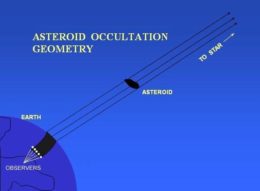
Diagram of an asteroid occultation. An asteroid passes in front of a distant star, casting a brief shadow on Earth than can be seen by observers spread out in the predicted path. [IOTA
As a proof of concept, the eVscope team has tested this in Oman by using these telescopes to make the first occultation observation of asteroid 21900 Orus, one of the Lucy mission’s upcoming targets. To catch a glimpse of Orus’s shadow as it passed in front of a star, teams were stationed at different locations near the predicted path the shadow would take. The successful observation of the occultation by one team (and the non-observation by the other!) confirmed Orus’s orbit and provided an independent measurement of its size.
The eVscope team plans to do this again the next time Orus passes in front of a background star, on 4 November — this time with more people and more telescopes involved. From this, Marchis hopes that we’ll be able to learn even more about the asteroid — from its size and shape to whether it has any moons — thereby improving science planning for Lucy’s flyby.

